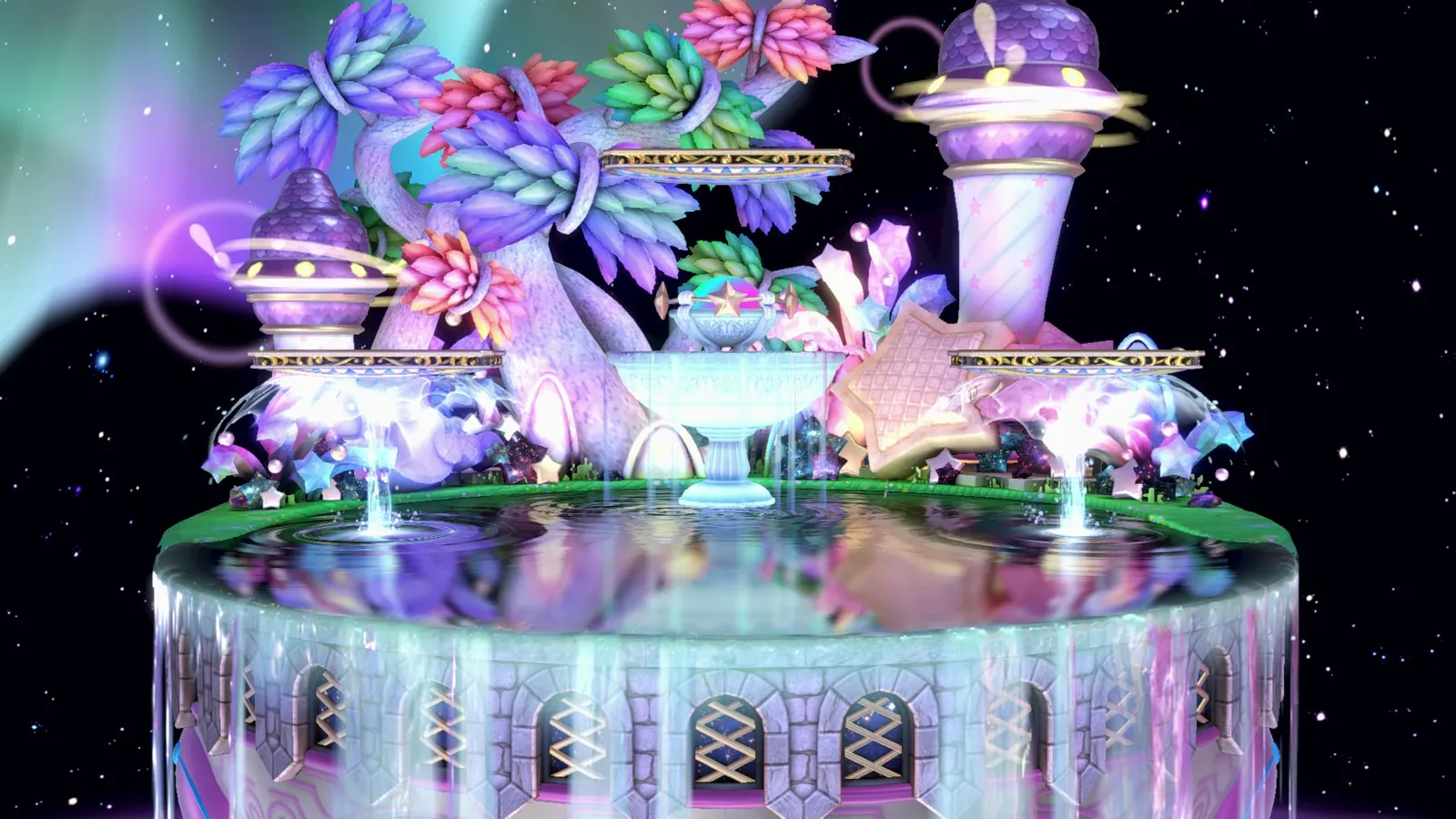Competitive Stages Are Actually The Best Casual Stages, Too
I’ve written about competitive vs. casual fighting game player preferences before, but here I’d like to focus on just platform fighting game stages.
Of course, what better showcase of this topic than beginning with the Super Smash Bros. series? By far the most popular games in the platform fighting game genre - it has a healthy dose of both competitive and casual players to consider.
Contents
Novelty vs. Predictability
A question I posed in my previous blog post on the topic is how do you measure fun for a casual audience vs. a competitive audience? It’s some combination of novelty and predictability. If everything is the same, there’s no gameplay variety. If everything is chaotic and random, the funness evaporates when a winning outcome seems based more on luck than skill (this is the balance a good Mario Party title has to strike for example).
What comes to mind when you think about a casual stage in Smash Bros. vs. a competitive stage? For casual stages you might think of Hyrule Temple or PokeFloats from Melee, or on the extreme Super Mario Maker or New Donk City from Ultimate. For competitive stages, you might think about Battlefield or Final Destination, or even frozen variations of Pokemon Stadium.
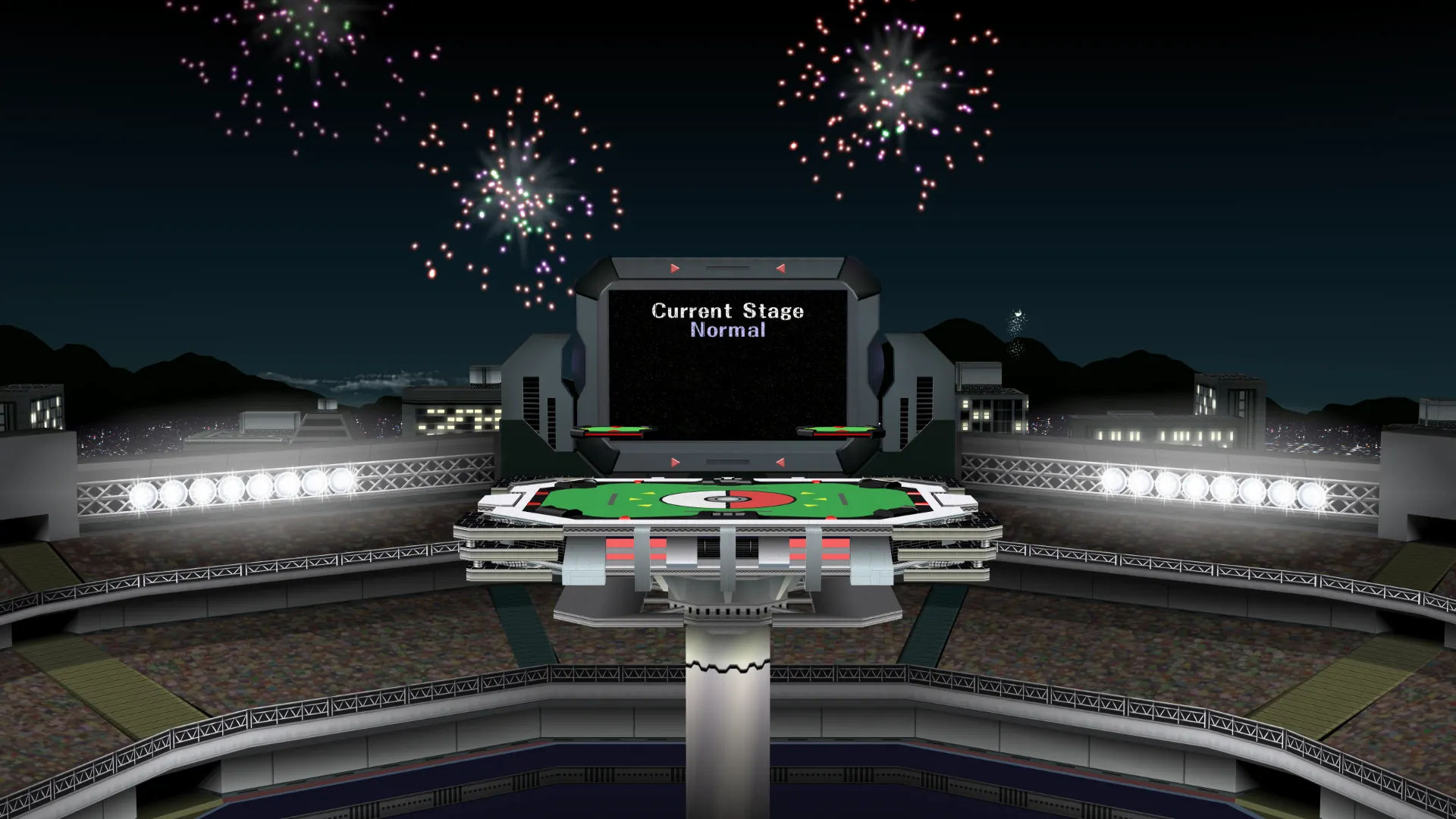
The chief distinction between casual and competitive stages, then, is their level of novelty and predictability. What someone probably considers a casual stage is likely high in novelty and low in predictability - usually resulting in a more chaotic stage, with hazards, random factors in variables like NPCs, destructive environments, or other random events. A competitive stage is generally more conforming to a symmetrical layout with predictable (or no) platform movement, no hazards, and thus a lower novelty factor.
Another way to conceptualize “competitive” stages might be standard-sized stages with more neutral layouts where the player maintains control. A neutral, symmetrical stage that’s predictable to play on affords each player relatively equal footing thus an appropriate degree of influence over the result of a match.
Players’ Favorite Smash Stages and Why
Now that we’ve established what a casual stage is and what a competitive stage is, it seems like a casual player would prefer casual stages, and competitive players would prefer competitive stages. But interestingly, that’s not exactly what we find.
Source Gaming Poll - Player Preferences
Source Gaming created a poll a couple of years ago asking players what Smash Ultimate stages they liked the most and why. This was their third poll, and the first one established some rough demographics from their audience, asking questions like whether or not Smash Bros. Ultimate was their first Smash game, how competitive they considered themselves, which game in the series was their favorite, etc. They have over 2,000 participants!
Here are some key results from the first and third polls they ran:
- 69% said Ultimate was their favorite Smash game
- 68.6% said they played either casually exclusively, or a little of both (31.4% said they were mostly or exclusively competitive)
- 80%+ were very satisfied with the stage selection in Ultimate
- For Stage Morph, 13.54% said they turn it on, 45.78% said sometimes they turn it on, and 40.67% say they never turn it on
- Stage Hazards: 16.02% never turn them off, 29.22% always turn them off, and 54.76% said sometimes they turned them off
An immediate takeaway from these numbers is it’s pretty surprising that the vast majority of people either never turn on Stage Morph or sometimes turn it on. Stage Morph, of course, would add a gimmick to any stage - having it transform into another one randomly. It’s also particularly interesting to note that a larger percentage of players always turn off stage hazards compared to players who deliberately leave them on (especially since they are on by default).
(To get a bit granular, there are actually issues with Ultimate’s hazards toggle, since it turns off animations and movement of some platforms, meaning that even in competitive play, typically hazards are never turned off. Therefore, it’s not a perfect gauge of players’ preferences. Nevertheless the findings are still interesting.)
Top Super Smash Bros. Ultimate Stages

With all that in mind so far, let’s take a look at the 12 most popular stage choices and why. Remember, Smash Ultimate has an enormous variety of stages (over 100 in fact). So this gives us the best idea about what a mostly-casual audience might prefer.
- Fountain of Dreams (10.71%)
- Dracula’s Castle (9.23%)
- New Donk City Hall (4.91%)
- Final Destination (3.27%)
- Temple (2.93%)
- Battlefield (2.88%)
- Great Plateau Tower (2.78%)
- Magicant (2.78%)
- Midgar (2.33%)
- Fourside (2.23%)
- Pokemon Stadium 2 (1.69%)
- Pokemon Stadium (1.54%)
Considering how few competitively-viable / neutral stage layouts there are in Ultimate compared to casual options, it’s shocking to see as many competitive stages as there are in this list. In the top 12, nearly half of them could be considered neutral layouts (with hazards turned off). And two of them are the iconic Battlefield and Final Destination.
Another interesting piece of data are the reasons listed for why these stages are loved. Check these out:
Fountain of Dreams
- Aesthetically, one of the most beautiful stages in the game
- Has a great atmosphere
- Faithful to it’s Melee variant. Happy to have it back
- Gimmick is subtle and not intrusive
Dracula’s Castle
- A unique stage layout
- Access to the Castlevania music
- Great references and details to the Castlevania series
New Donk City Hall
- Fun visuals
- Happy to see a Mario Odyssey stage
- Different layouts are all simple
- Fun cameos from Pauline and Captain Toad
Final Destination
- Any music can be used on this stage
- The simplest stage of them all to play on
- Really like the background visuals
Temple
- THE multiplayer map, great for 1v1 but also great for 8-player Smash
- Many players favorite Melee stage, happy to see it return again
- Looks at its best in Ultimate
Battlefield
- Any music can be used on this stage
- A fun and simple stage to fight on, adding a bit more depth than Final Destination
- The best looking design for Battlefield so far
Great Plateau Tower
- Its main gimmick is not intrusive
- Makes the player feel like they are in Breath of the Wild
- A good stage layout, especially when the roof part breaks
Magicant
- A great visual style, looks fantastic in HD
- Many players favourite stage from Super Smash Bros. for Nintendo 3DS
- Lots of references to the first two Earthbound games (Flying Men, Brick Road, etc)
Midgar
- A simple stage, but with a bit of spice from the summons
- Summons are a great reference to the Final Fantasy series
- A great looking stage
Fourside
- Has a unique stage layout
- The hazards don’t completely disrupt the battle
- Great visuals
- Many players favourite Melee stage
Pokemon Stadium 2
- The layout was perfect for competitive play, so the stage is better now that hazards can be turned off
- The changes that do happen aren’t to intrusive
Pokemon Stadium
- The changing layout keeps fighters on their toes
- The hazards aren’t too intrusive in this stage
- Great for competitive play when hazards have been turned off
Mostly the compliments for these top 12 stages talk about the visuals, references, and the atmosphere. Occasionally the layouts are praised as well, but what’s fascinating about that is almost every time hazards or layouts are brought up, the stage gets praised for its simple design, or that the gimmicks aren’t too intrusive.
When you broaden it to the entire list of ~100 stages, most of the top stages were praised specifically for their visuals and atmosphere, roughly 35 stages were praised for their simplicity or non-intrusive gimmicks, and only about 19 or so stages were praised for unique layouts or mentioning their hazards in a positive light.
Even so, generally speaking, gimmick-heavy stages were typically near the bottom of the list.
The data tells us that, for a majority-casual audience (~70%), in general players care more about a simple layout with nice visuals than a unique layout. Nostalgia, fanservice, and other interests are certainly factors which can sometimes circumvent layout preferences, however.
In fairness, an option in the poll was also “Gimmick Free Stages Only” which only got 0.15% of the vote with the reason cited: “More enjoyable to fight without RNG disruptions.” But I think this has more to do with what people consciously consider when thinking about it directly vs. what they subconsciously decide to do when they’re actually playing (more on this later).
Also only 0.74% of people said they only play on Omega / Battlefield-only forms - which indicates to me that most people want some stage layout variety, even if the theming is unique. No surprises there. But the competitive scene actually has more than just two stage layouts - something I’d like to get into a bit next.
My Experience as a Stage Modder
Something I noticed pretty early on in the Smash Bros. competitive scene for Super Smash Bros. Melee and Project M is that the criteria for what was considered a “legal” or competitive stage choice was fairly strict. This meant even though dozens of stages choices were available to players, only a handful were ever selected during tournament and friendly matches.
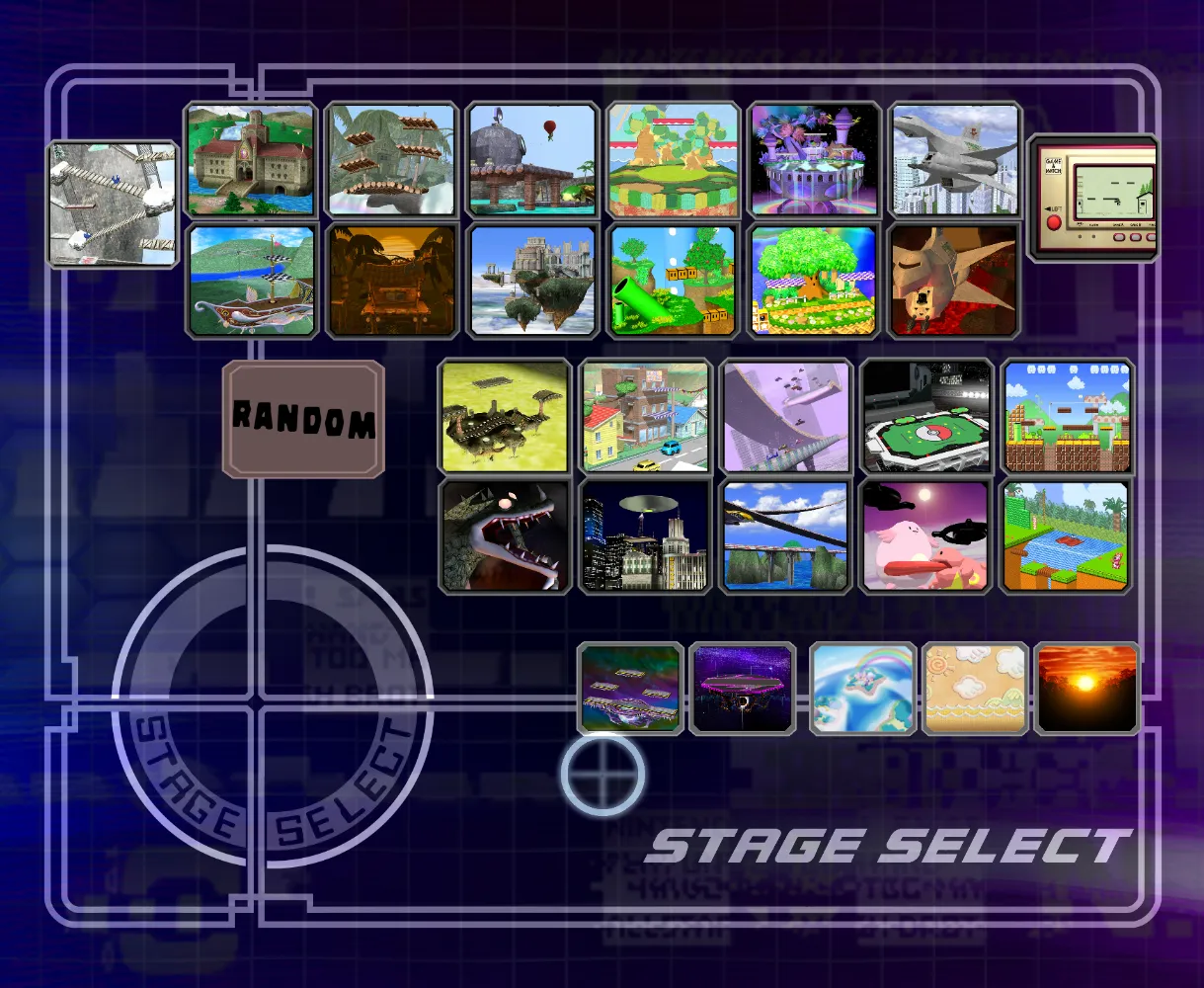
While fewer options made it easier to practice and focus on improvement, the stage music and scenery often got repetitive. So I had an idea to create 1:1 stage reskins - alternative versions of tournament-legal stages that played identically to the original but with unique theming. They’d have the same blast zone radius, platform and base collision values, and stage bounds, but might differ visually.
This idea certainly wasn’t original to me, but I decided to double-down on it by creating some.
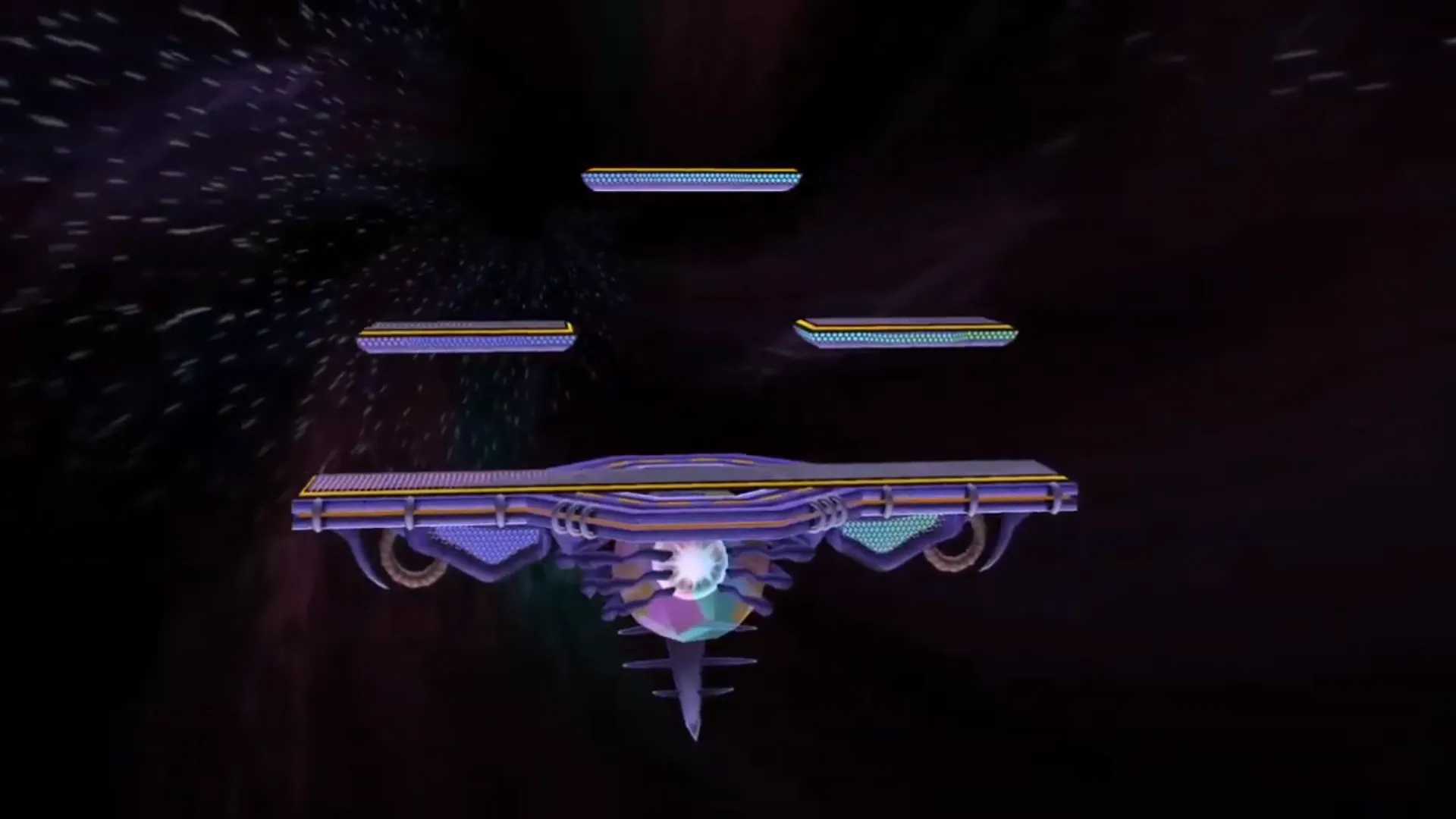
Melee Battlefield, a visual alt stage for Project M 3.6’s Battlefield stage that offered the same layout but with a unique look.
This opened a whole new set of possibilities for stage theming, music choices, and visual styles that provided additional variety while not compromising on the original stage’s tournament-viable layout design.
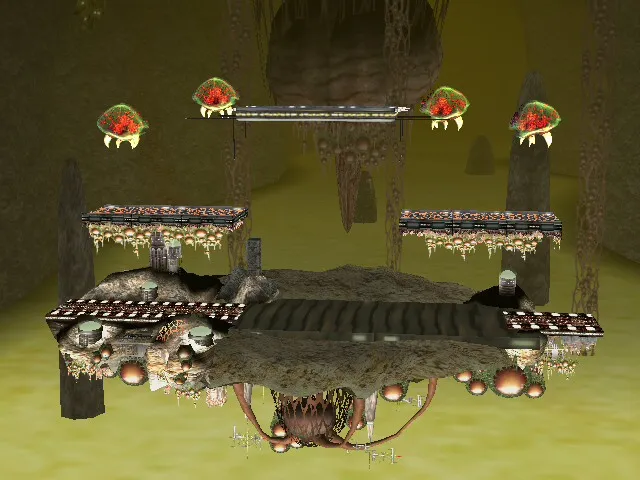
Brinstarfield, one of the earliest 1:1 stages I made for Legacy TE that was a tourney legal Brinstar-themed variant of Battlefield.
I spent nearly 5 years creating custom stages for Project M and more recently about 2 years creating custom Melee stages with this 1:1 tourney reskin philosophy in mind. In fact, this was the basis upon which Legacy TE was born - additive, tournament-friendly content would give more customization and variety to any friendlies or tournament match set.
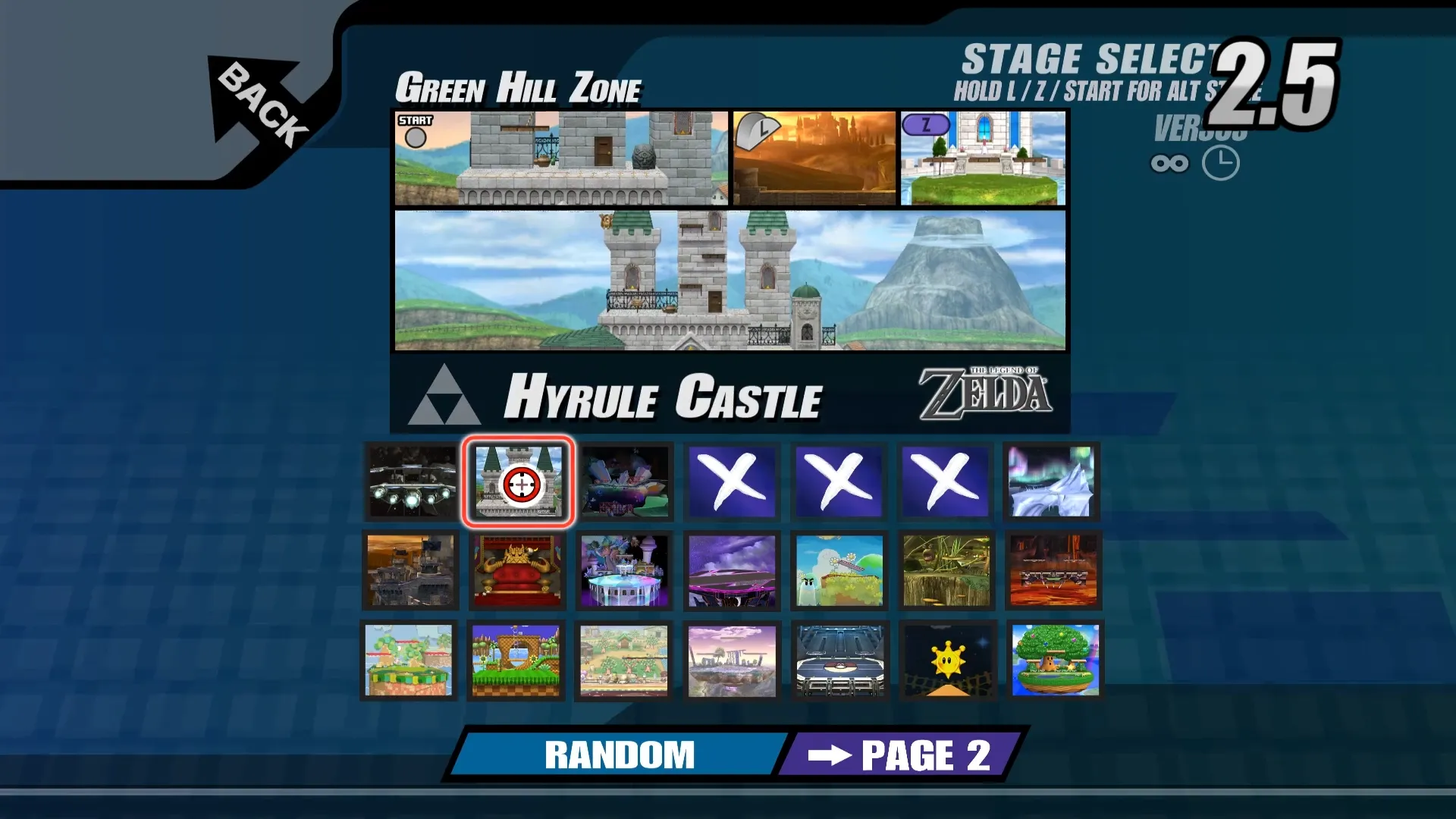
Nuances in Stage Differences
After spending so long designing and making stages, I learned that aesthetics really do matter - even to competitive players. In fact, there’s utility in use of colors and lighting to help make what’s happening clearer on-screen. Making decisions to not obstruct the player’s view, for example, by having objects in the foreground is vital.
When you begin stage modding, you’re often tempted to add extra pizazz or something to it (superfluous objects, wild colors, flashy special effects, etc.), but if it at all causes visual impairment for the player, it’s never worth it. Often going overboard here betrays the habits of a more amateur stage designer.
Neutral Stage Variety Showcase: Project M 3.6
You might be wondering - does this just mean people only want to play on different versions of Battlefield?! And not at all, that’s missing the point (as we saw in the poll above, only a tiny minority of players only want one or two layout options).
For one thing, there are many factors that go into a stage beyond how many platforms it has:
- Base stage shape (does it have walls that go past the blast zone? Is it a hovering island? etc.)
- Base stage slopes (if any)
- Platform movement
- Platform angle
- Blast zone sizes
- Overall stage boundaries
- Hazards, degree of intrusiveness (or lack thereof)
The result is many, many unique layouts that offer fun experiences. Project M 3.6 offered a great variety of neutral stage layouts - here are some examples:
Delfino’s Secret
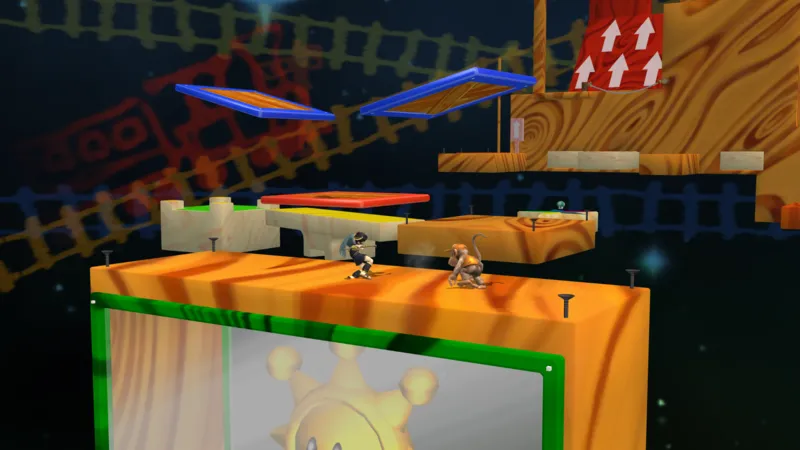
A stage with walls and unique 3 platforms that moved in interesting ways.
Smashville
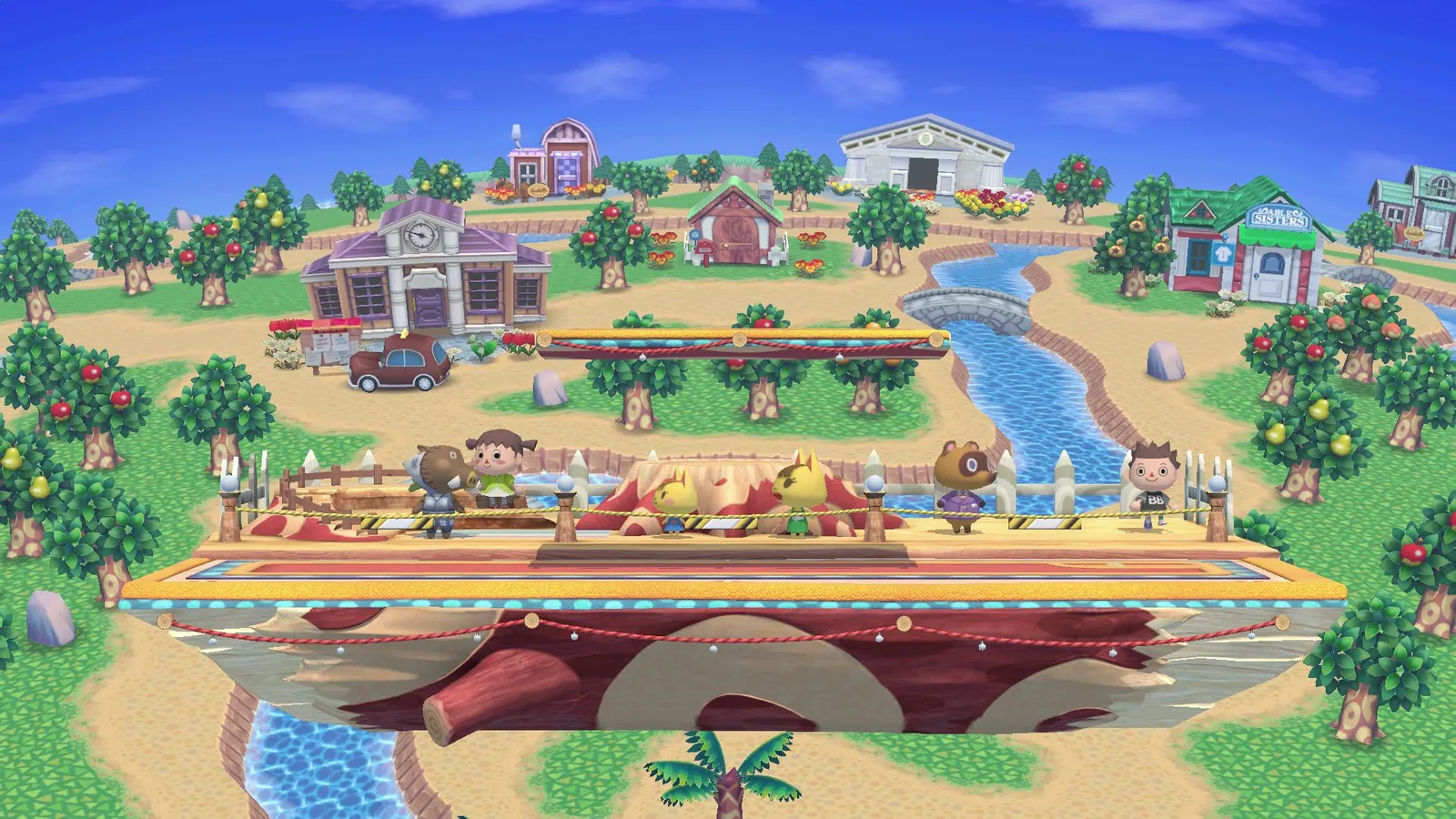
A thin base stage with a moving top platform that moves side to side.
Distant Planet

A stage with walls and 4 platforms where the outter-most leaf platforms move under the weight of characters.
Dream Land

A revamped, HD version of Dream Land from Super Smash Bros. on Nintendo 64.
Norfair
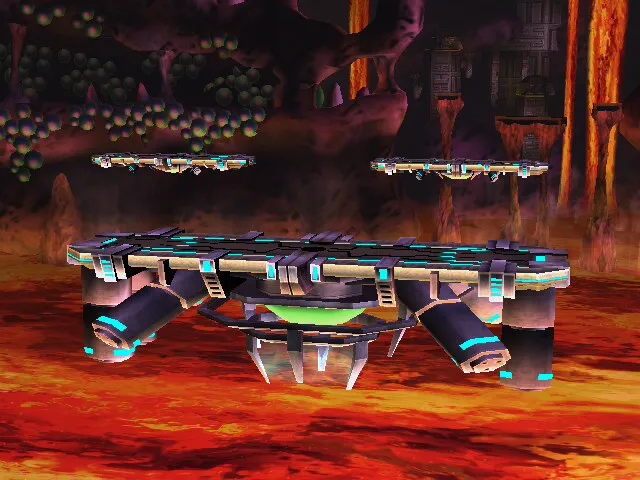
A two-platform stage with longer platforms.
Battlefield

The standard Battlefield layout (with some slight differences from Brawl’s)
Final Destination
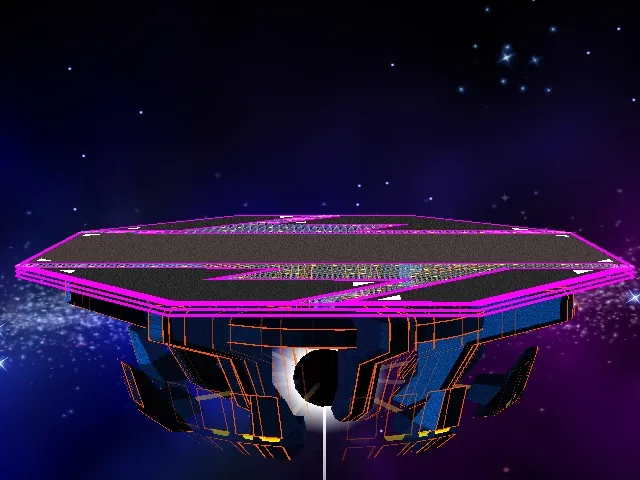
The platformless Final Destination from Melee.
Fountain of Dreams
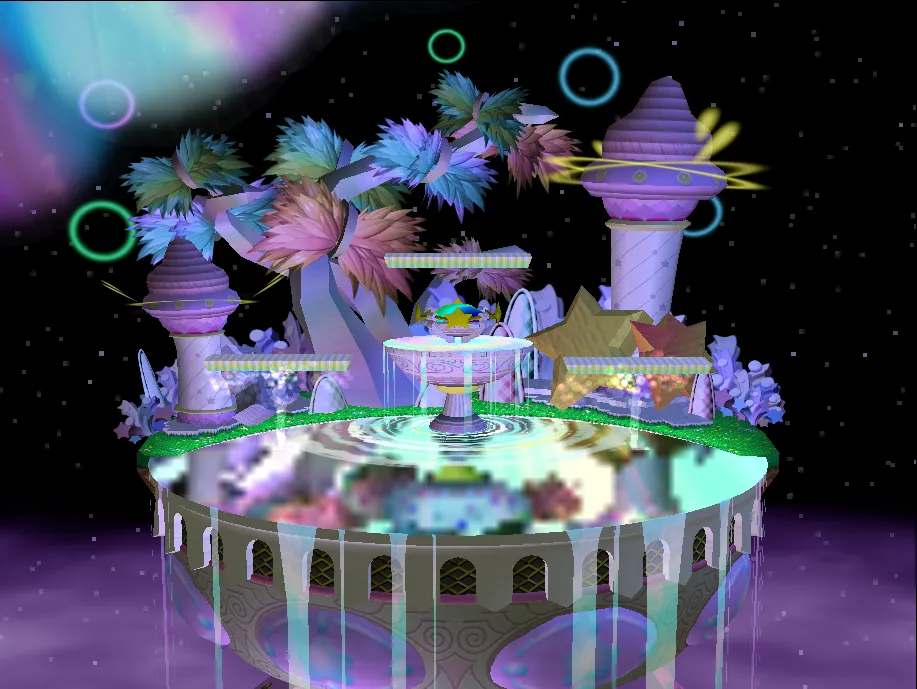
Two of the three platforms move vertically.
Green Hill Zone

One platform that swings from left to right.
Pokemon Stadium 2
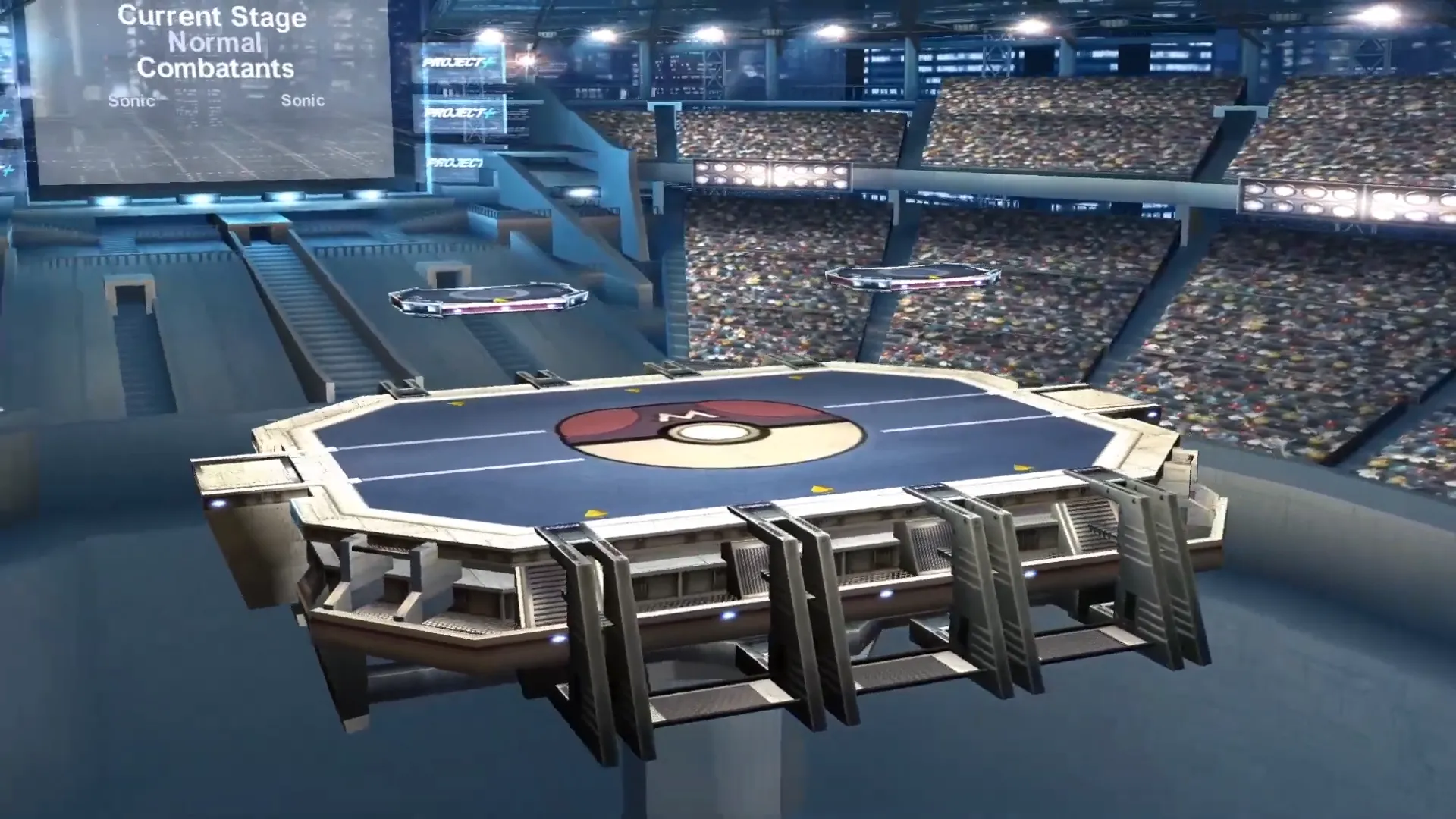
Just like the original Brawl stage with a new coat of paint and hazardless / no transformations.
Bowser’s Castle

A more basic stage with 3 platforms and walls.
Wario Land
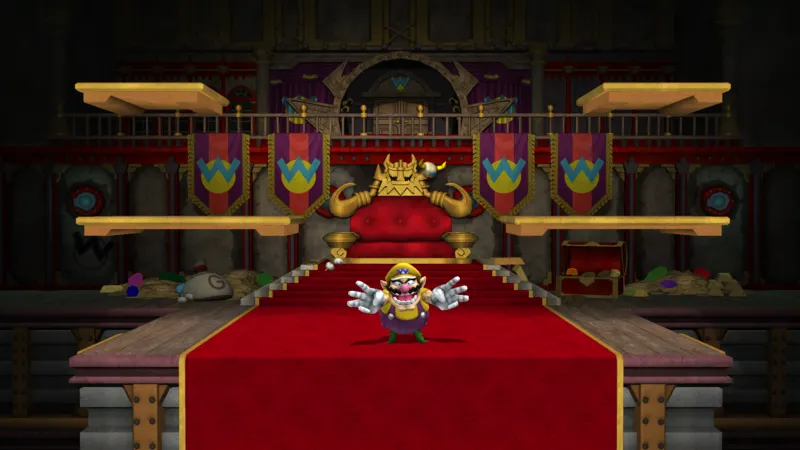
A 4-platform stage with walls and closer blast zones.
While not every Project M competitive scene adopted every one of these stages as tourney legal options during the 3.6 years, the amount of choices here is great, and while each of these stages have garnered some level of complaining from more decorated PM players, these still serve as great examples of the variety available to be experienced even within the more confined context of simpler, neutral layouts.
Other Platform Fighting Games’ Stages
Rivals of Aether and its sequel, Rivals 2, famously only have neutral stage layouts. None of their stages have absurdist hazards or crazy layouts. That being said, those games are certainly targeted towards the competitive crowd, so no surprises there.

When I helped work on Smack Studio, I was an outspoken advocate for neutral stage layouts. While Smack Studio certainly targets a more casual audience, having a balance between novel options and neutral options is key. Luckily, with its stage editor, the community will eventually be able to share their creations online, and create their dream layouts to use.

Smack Studio’s Dash City - a stage with a layout similar to Smashville - has quickly become a favorite and the starter stage option embraced by its fledgling competitive scene. Neon Metro, Snow Fields (Hazardless), Battlegrounds, and Final Stand are also very commonly-chosen stages by the players who have the most hours of playtime in the game, and are each unsurprisingly additional tournament-legal stage choices.
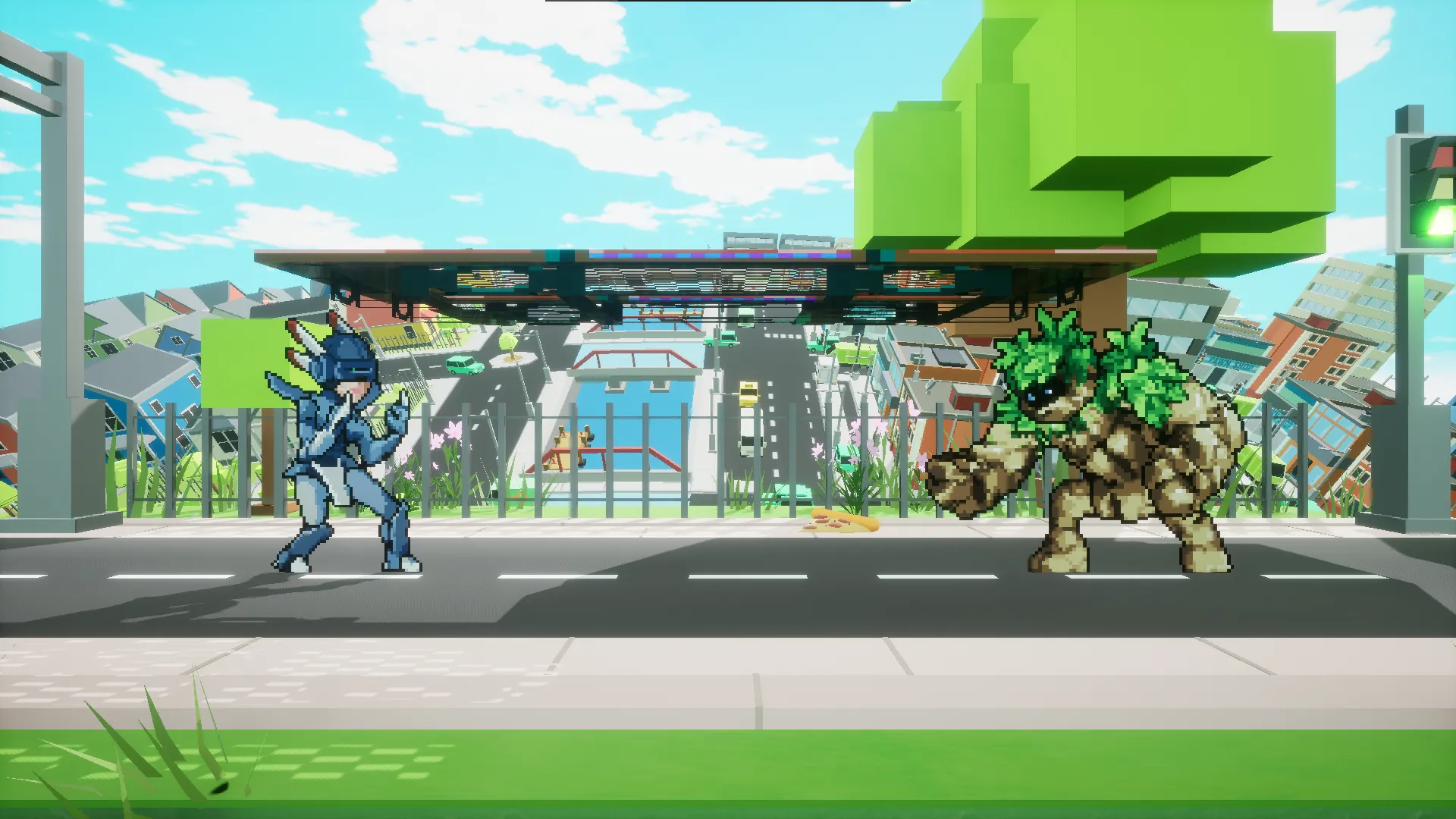
Nickelodeon All-Star Brawl 2 has a variety of casual and competitive stage layout variations which works well for the variety offered - but the vast majority of stages chosen are - you guessed it - the neutral layouts. In fact, they go a step further and actually let you select which stage layout you want and you can pick the theme / visual setting from there!
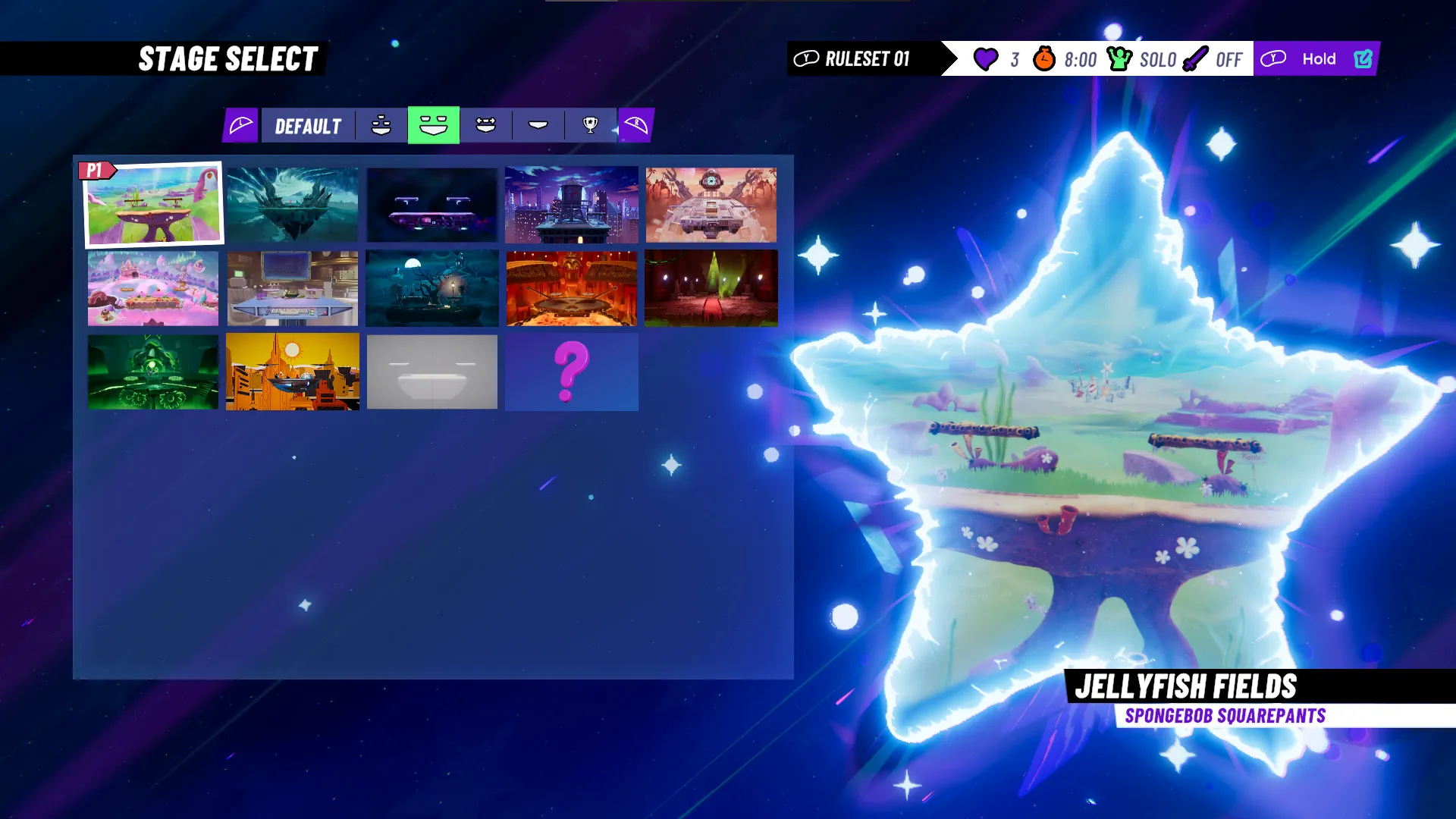
Fraymakers and Rushdown Revolt also have mostly, if not all, neutral layout stage options.
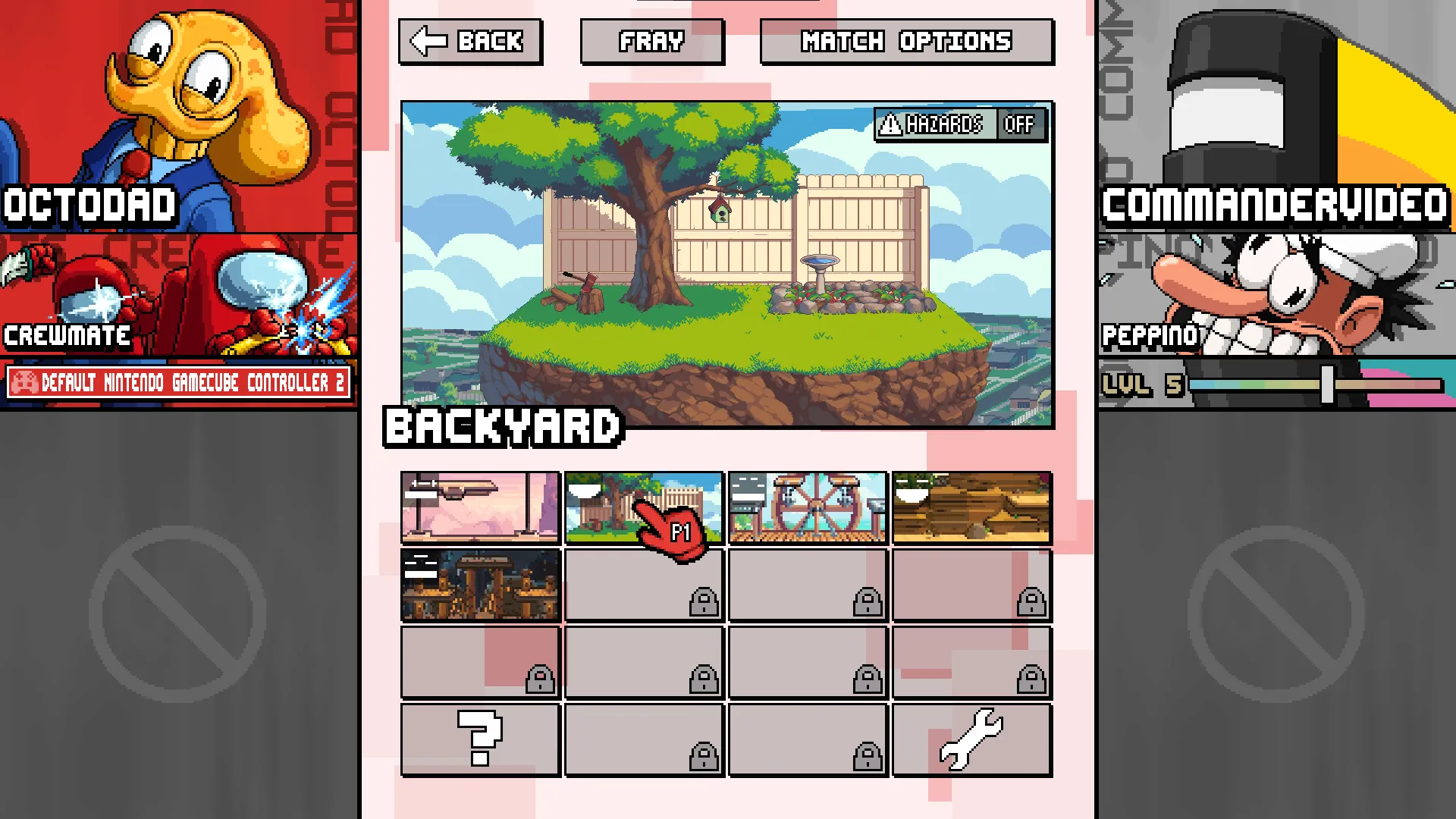
MultiVersus also has neutral layouts, despite it’s more casual audience target.

The Best Stages Get Out of the Way
Really, the biggest lesson I think we can take from these findings is the best stages are neutral stages - not because players like plain or boring play options, but because they want to focus on the core elements of what makes platform fighting games fun: control during gameplay. If your game has amazing movement, in-game physics, and a cast of characters with kits that are fun to use, you want as few barriers to enjoy that as possible. And it turns out a neutral stage layout with predictable properties gives you, the player, the most control possible, and thus the most amount of fun.
In isolation, it may seem like wackier, gimmicky, or generally more novel stage layouts might be appealing to casual players. In the beginning, they certainly can be - but over time, as the player gets more comfortable and familiar with the game, chances are they won’t be returning to a chaotic stage more often than they have to - even players who play strictly casually. And it has a lot more to do with the feeling that they have influence or control over the game’s outcome.
If you were to ask your average casual Smash Bros. player what their most memorable stages are in Smash, they might offer up more gimmick-based stages - and that makes sense, they’re novel. But if you were to gather data about the most-played stages by any Smash player, you may find that the more neutral stages got the most playtime.
(Ironically, the most chaotic stages are probably most fun in semi-competitive scenarios. Have you heard of top Melee players deciding to gentlemen at PokeFloats? The absurd moving layout of the stage is the reason why it’s jokingly sometimes selected as a stage during tournament sets - it becomes another level of competitive to just survive. However, these examples are far and few between.)
Players are more concerned about being able to play the character they chose, and play them well. A stage can aid or hinder that process - and so ironically, a stage attempting to add some novel chaos might be enough to zap the fun out of a casual player’s experience.
Of course, every individual has their own unique preferences, so exceptions to this rule exist. However, by and large, based on the data that’s been recorded and my anecdotal evidence as someone who’s been playing platform fighting games since 1999, I think it’s safe to say (if given the option) stages with neutral layouts will always be the winning picks for both competitive players and dedicated casual players alike.
A Note for Stage Creators
For stage creators and modders who actively choose to incorporate more gimmicky elements or hazards into stages - there’s still a place for that. It’s impressive and fun to do something unique with stages! Novel factor is definitely important in doses, and depending on what kind of experiences you want to offer players.
However, when it comes to stages that are played on the most, just bear in mind the more neutral options will probably get the most playtime over stages with a gimmick or hazards. If that doesn’t matter to you, then great. May main point is to get rid of this notion that casual players only prefer to play on gimmicky stages and don’t touch more neutral options - it’s simply not true.
Also - what you do is awesome. Keep making amazing stages for Melee / Animelee, Project+, Rivals of Aether, Smack Studio, Fraymakers, or whichever game’s tools you’re working with.

